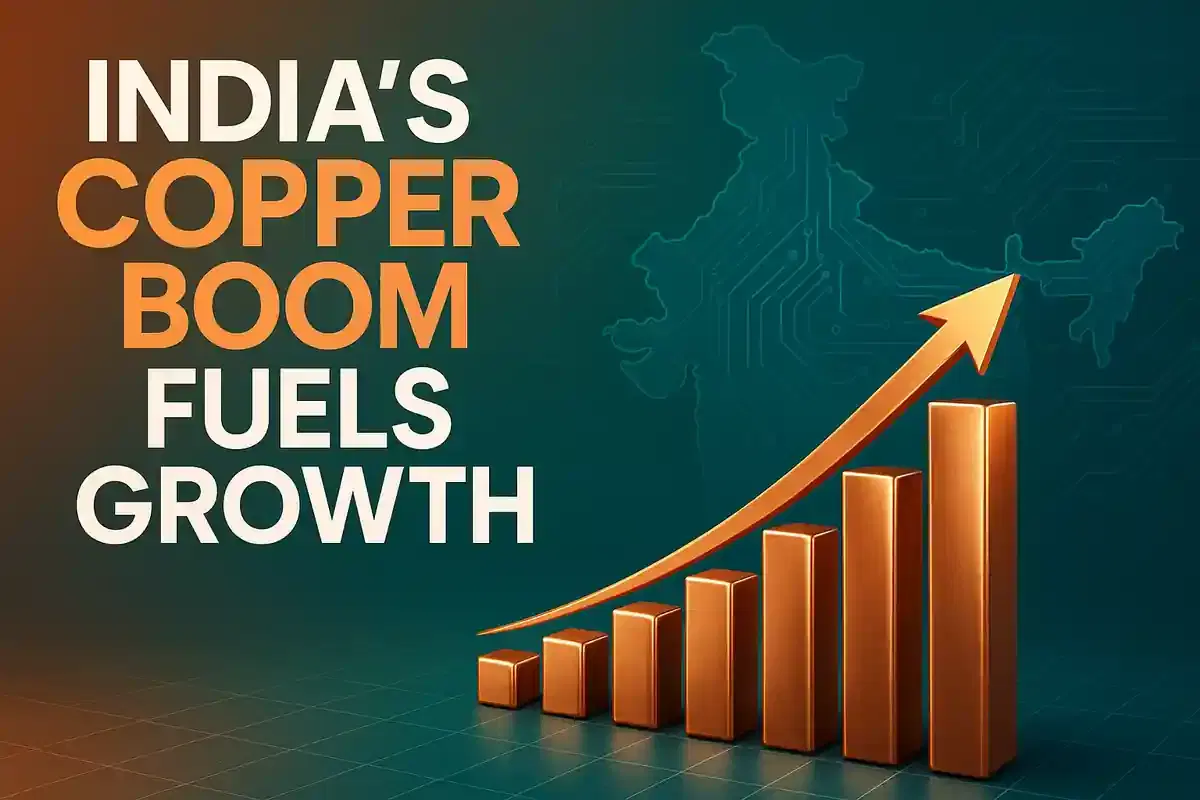India's Copper Demand Surges 9.3% Driven by Infrastructure and Green Energy Growth
Commodities
|
29th October 2025, 3:04 PM

▶
Short Description :
Detailed Coverage :
India's copper consumption reached 1878 kilotonnes in the fiscal year 2025, marking a significant 9.3% increase compared to the previous year. This growth is largely attributed to substantial expansion in the building and construction sectors, which saw an 11% rise, and the infrastructure segment, which grew by 17%.
The clean energy transition and the development of emerging technologies are also major contributors. Additionally, the consumer durables sector experienced a strong 19% surge, driven by high sales of appliances like air conditioners, fans, refrigerators, and washing machines.
Government initiatives promoting renewable energy, sustainable mobility, and infrastructure development have significantly boosted copper demand, underscoring its importance for national growth.
The report also notes an increased reliance on recycled copper. The share of secondary copper in production rose to 42% of total demand in FY25, up from 38.4% in FY24. India generated 504 kilotonnes of scrap, supplemented by 214 kilotonnes of imported scrap, indicating a growing focus on circular economy principles in copper sourcing.
Mayur Karmarkar, Managing Director of the International Copper Association India, stressed the need for India to build its own copper reserves to enhance domestic supply chains, ensuring future growth and resilience.
Impact: This rising demand directly benefits companies involved in copper mining, processing, and distribution. It also signifies robust activity in sectors like construction, infrastructure, renewable energy, and consumer goods, which are heavy users of copper. Increased demand can lead to higher prices for copper, impacting input costs for various industries but also signaling economic expansion. Rating: 8/10
Difficult Terms: Kilotonnes (kt): A unit of mass equal to 1,000 metric tons. Y-o-y (year-on-year): A comparison of current data with the data from the same period in the previous year. Clean energy transition: The shift from fossil fuels to renewable energy sources like solar, wind, and hydropower. Consumer durables: Goods that are not consumed completely after a single use and are expected to last for a long time, such as appliances. Circular economy principles: An economic model aimed at eliminating waste and the continual use of resources, focusing on recycling and reusing materials. Secondary copper: Copper obtained from recycling scrap materials, as opposed to primary copper from mining ore.